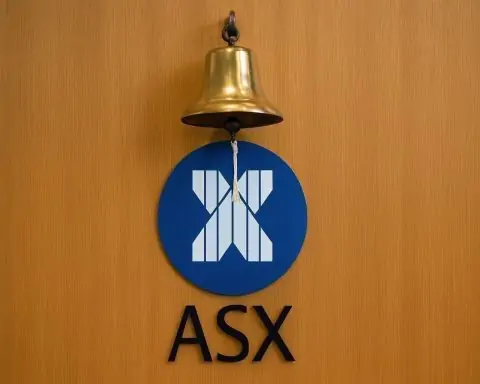- AAL Stock Price: As of October 27, 2025, American Airlines Group (NASDAQ: AAL) shares trade around $13.78 [1] after a sharp rally late last week. The stock surged nearly 14% over Thursday and Friday following upbeat earnings news, lifting it from the low-$12 range to a multi-week high.
- Post-Earnings Surge: American Airlines stock jumped ~6% on Thursday (Oct. 23) alone after the company raised its full-year profit forecast and beat Q3 expectations [2]. It closed at $12.77 on Oct. 23 and then climbed to $13.78 by Oct. 24 [3] on heavy trading volume, reflecting renewed investor optimism.
- Q3 2025 Results: The airline reported record third-quarter revenue of about $13.7 billion (flat year-on-year), slightly above Wall Street estimates [4]. It still posted a net loss of $114 million (−$0.17 per share), but this was a smaller loss than expected (analysts had projected −$0.28) [5]. Cost controls and resilient travel demand helped American outperform pessimistic forecasts.
- Profit Outlook Raised: On Oct. 23, American sharply upgraded its 2025 earnings guidance to $0.65–$0.95 in adjusted earnings per share for the full year [6]. This is a turnaround from its prior breakeven-to-loss outlook and implies a solid profit in Q4. Executives now forecast Q4 EPS of $0.45–$0.75 [7], citing stronger fares and cost-cutting.
- Travel Demand Rebounds: After a mid-year slump, air travel demand is booming again. American said passenger yields turned positive in September as industry capacity cuts lifted fares [8] [9]. Premium cabins are leading the rebound – the airline noted that premium cabin revenue growth is outpacing main cabin sales [10], signaling that affluent travelers are willing to pay up for better service. Robust holiday bookings are expected to keep planes full into year-end.
- Strategic Moves: American is pivoting to higher-margin offerings. It plans to expand premium seating at nearly twice the rate of economy seats and invest in new airport lounges to narrow the margin gap with rivals Delta and United [11]. The carrier also appointed a new Chief Commercial Officer, Nathaniel “Nat” Pieper (from the oneworld alliance), effective Nov. 3, to help drive revenue growth [12]. Management emphasizes “best-in-class cost management” and continued investments in its network and loyalty program to fuel future growth [13].
- Analyst Sentiment: Wall Street is cautiously optimistic on AAL. Consensus rating: Moderate Buy. About 19 analysts cover the stock with 12-month price targets averaging ~$16–17 – roughly 30% above current levels [14]. Bulls argue the travel recovery and American’s turnaround efforts could propel further gains. However, skeptics note American’s heavy debt load (~$36–37 billion) [15] and rising labor and fuel costs as risks that could cap profitability if the economy falters. Notably, Goldman Sachs reiterated a Sell on AAL with an $8 target, citing those debt and cost concerns [16].
- Competitor Check: Even after last week’s jump, AAL shares remain down ~30% year-to-date [17], lagging some rivals. Major competitors Delta Air Lines and United Airlines have fared better in 2025, buoyed by strong profits and premium demand, and their stocks have held up relatively well [18]. In contrast, smaller rival JetBlue is down over 40% this year [19] amid heavier losses, highlighting a split in airline industry fortunes.
Stock Price and Recent Trading Activity
American Airlines stock is showing new signs of life after a turbulent year. As of midday Monday (Oct. 27, 2025), AAL traded around $13.78 per share [20], essentially flat from Friday’s close but up significantly from earlier last week. The stock had languished in the low-$12 range before an earnings-fueled rally sent it sharply higher. On Thursday, Oct. 23, AAL leapt about 5–6% to close at $12.77 [21] after the company surprised investors with improved guidance. The momentum continued into Friday, with American’s stock climbing another ~8% to finish the week at $13.78 [22]. In just two sessions, shares jumped nearly 14% — a notable surge backed by unusually heavy trading volume as investors piled in.
This rebound comes after a prolonged slump. Year-to-date, AAL is still down roughly 30% [23], making it one of the weaker performers among major airlines in 2025. By comparison, the broader market and some rival carriers have seen milder declines or even gains. American’s stock started the year in the high teens, but economic headwinds and company-specific challenges knocked it into the low double-digits by the summer. Last week’s rally, however, indicates sentiment may be turning more positive. Volume spiked on the earnings news – over 90 million AAL shares traded on Thursday alone (versus around 30–50 million on a typical day), reflecting renewed interest. Analysts note that such trading activity and price momentum often signal a potential trend change, though it will take sustained fundamental improvement to fully regain investor confidence.
Q3 Earnings Beat Expectations and Lift Outlook
The catalyst for American’s sudden stock surge was its third-quarter 2025 earnings report, delivered on Oct. 23. The airline’s results, while mixed, were better than many had feared. Revenue hit a record $13.69 billion for Q3 [24], essentially flat versus a year ago but slightly above analysts’ consensus (~$13.63B). This top-line result indicates that American managed to maintain revenues despite some challenges earlier in the year. On the bottom line, American posted a net loss of $114 million (−$0.17 per share) [25] for the quarter. Importantly, this loss was smaller than expected – Wall Street had been bracing for a steeper ~$0.28 per-share loss [26]. In other words, American “reported a smaller-than-expected loss in the third quarter,” as Bloomberg noted, which helped allay investors’ worst fears [27].
Executives attributed the improvement to better cost control and a recovering demand environment. After adjusting for special items, the Q3 loss was roughly the same (also 17 cents per share) [28]. While still in the red, American’s results showed clear progress relative to earlier in the year. The airline had been squeezed by rising costs – including markedly higher labor expenses from new union contracts – and a temporary travel slowdown over the summer. By Q3, however, American was reining in expenses and benefiting from a rebound in high-margin revenue (more on that below). This enabled the company to beat the Street’s expectations on both revenue and earnings, which immediately lifted market sentiment.
On the back of these encouraging results, American delivered an even bigger surprise: management raised its full-year profit forecast. The company updated its 2025 guidance to project $0.65–$0.95 in adjusted earnings per share [29]. This is a significant upward revision – earlier in the year (as of July), American had told investors it might only break even or eke out a few cents of profit at best. In fact, the prior guidance ranged from a slight loss (−$0.20) up to about $0.80 EPS [30], so the new outlook represents a swing to a more solid profit. To achieve that, American anticipates a strong holiday quarter: executives forecast Q4 2025 earnings of $0.45–$0.75 per share [31]. If realized, that quarterly profit would cement American’s return to profitability for the full year.
The bullish forecast reflects management’s confidence that the worst turbulence is behind them. “We are delivering on our commitments,” CEO Robert Isom said, highlighting a return to revenue growth and improved efficiency [32]. Notably, American’s guidance hike came just a day after another major carrier, Southwest Airlines, announced a surprise Q3 profit despite earlier challenges [33]. The broader takeaway: U.S. airlines appear to be ending 2025 on a stronger note than many anticipated a few months ago. American’s stock jumped nearly 8% intraday on Oct. 23 as traders cheered the earnings beat and optimistic outlook, and it ultimately closed up ~6% for the day [34] [35]. For context, that single-day gain halted a multi-week slide and put the shares at their highest level in about two months.
Rebounding Travel Demand Fuels Renewed Optimism
American’s improving fortunes are closely tied to a broader rebound in air travel demand and strategic moves to capitalize on it. Earlier in 2025, airlines faced a soft patch – a slowdown in domestic travel amid economic uncertainty (exacerbated by factors like geopolitical events and even U.S. trade policy turbulence) had forced carriers into fare wars [36]. To fill seats, airlines slashed ticket prices in the first half, denting margins. American itself started the year on a cautious footing: back in January, it actually warned that 2025 profits could disappoint due to higher costs (from rich new labor deals) and those demand headwinds [37] [38]. This conservative outlook sent AAL shares tumbling at the time [39].
Fast-forward to fall, and the narrative has flipped. Air travel roared back strongly in the second half of 2025. Industry-wide, both leisure and business travel demand have surged. The International Air Transport Association (IATA) now projects 2025 global airline revenue to top $1 trillion with a record 5.2 billion passengers flown [40] – a clear sign that the post-pandemic travel boom still has legs. American Airlines has been a direct beneficiary of this trend, especially on the higher end of the market. The carrier noted that premium cabins are driving outsized revenue gains. In Q3, “premium unit revenue growth year over year continues to outperform the main cabin,” American reported [41]. In plain language, first- and business-class tickets (as well as other high-end services) are selling extremely well, more than making up for any weakness in economy fares. Affluent travelers and corporate clients are willing to pay extra for comfort and perks, and this is boosting American’s average fares.
At the same time, American and its peers took steps to ensure they weren’t oversupplying the market. A “sharp reduction” in airline seat capacity growth – i.e. airlines trimming schedules and routes – has helped restore pricing power in the industry [42] [43]. Over the summer, American joined other carriers in cutting back some flights (especially on routes with weaker demand) to tighten supply. These capacity discipline moves, combined with the demand recovery, let airlines raise fares without losing passengers. By September, American said it saw a return to positive unit revenue growth (higher revenue per seat) after the declines earlier in the year [44] [45]. In practical terms, flights are fuller and ticket prices are higher than they were in the sluggish spring months.
American’s leadership is now doubling down on strategies to leverage the travel boom. One major initiative: pivoting the product mix toward premium offerings. The airline announced plans to expand its premium seating inventory (lie-flat business class seats, premium economy, etc.) at nearly twice the pace of regular economy seat growth [46]. By flying fewer low-fare seats and more high-fare ones, American hopes to boost its overall margin per flight. The company is also investing in the ground experience for lucrative customers – for example, building new Flagship airport lounges and upgrading amenities for its loyalty program elites [47]. These moves aim to attract more high-spending travelers and close the profitability gap with rivals like Delta, which has been a leader in premium revenue.
Internally, American has made leadership changes to execute this strategy. It recently hired Nat Pieper as Chief Commercial Officer, effective November 3 [48]. Pieper comes from the oneworld alliance and brings experience in revenue management; he’ll be tasked with spurring sales and optimizing the network. CEO Robert Isom has emphasized operational improvements as well – from reliability (after some IT outages and scheduling issues industry-wide) to continuing cost cuts. “We’ve built a strong foundation, with best-in-class cost management,” Isom said, expressing confidence that ongoing investments in the network, customer experience and loyalty program will drive revenue growth into 2026 [49]. Indeed, American has been aggressively finding efficiencies: it’s retiring older, less fuel-efficient jets and trimming unprofitable flying to cut costs [50]. Those efforts, combined with more stable fuel prices lately and new labor agreements providing stability in operations, have leadership optimistic that the airline’s turnaround is gaining altitude.
Financial Health, Labor Deals, and Cost Headwinds
While demand tailwinds are helping, American Airlines still faces some challenges on the cost side of the equation. Notably, the company carries one of the largest debt loads in the industry – about $36–37 billion in total debt outstanding [51]. The airline took on significant debt during the pandemic to survive the downturn, and it hasn’t paid much of it down yet. Serving this debt (interest payments) and eventually reducing it remains a priority for management. American’s CFO has outlined plans to start chipping away at debt, aiming to get it under $35 billion by 2027 through using excess cash flow [52]. The good news is that with travel demand up and profitability improving, American expects over $1 billion in free cash flow in the near term [53], which can help deleverage. However, the debt burden is a lingering concern for analysts – it means a larger portion of earnings will go to creditors, and it leaves the company less flexibility if another downturn hits.
Labor costs are another pressure point. American spent much of 2023–2024 negotiating rich new contracts with its workforce. For instance, last year it ratified a new five-year deal with 28,000 flight attendants that included pay raises of up to 20.5% plus retroactive back pay [54]. It also inked a big contract extension with its mechanics and ground staff. And in 2023, American gave its pilots hefty raises (over 40% in cumulative increases through 2027) to match deals won at Delta and United. These agreements were necessary to retain staff amid industry labor shortages, but they have significantly boosted American’s salary and benefits expenses. In fact, American’s management warned in early 2025 that non-fuel unit costs would rise mid-single digits largely due to higher pay rates [55]. Now, with those labor deals in place, American must achieve corresponding revenue growth and efficiency gains to offset the expense. There is evidence of progress – even with the labor inflation, American kept its Q3 adjusted operating margin roughly flat year-on-year at ~1.1% [56]. Still, investors remain wary: if fuel prices climb or the economy softens, the combination of a bloated cost base and big debt could quickly squeeze margins [57].
For the moment, fuel prices have been relatively stable, and actually many forecasts see jet fuel costs easing heading into 2026 [58]. But oil market volatility (e.g. due to geopolitical tensions) is always a wildcard for airlines. Similarly, macroeconomic factors like interest rates and consumer confidence bear watching. Airline stocks are highly cyclical – if consumer demand falters because of an economic slowdown or external shock, airlines tend to feel the pain fast. An example came in mid-October when a brief U.S. government shutdown led to thousands of flight delays and some cancellations, as air traffic control staffing was strained [59]. That episode underscored how sensitive this industry is to policy and political events. Fortunately, U.S. travel remained robust despite those disruptions, and Congress resolved the shutdown without prolonged damage. American’s raised outlook implicitly assumes no major hiccups in the economy or fuel markets through year-end. In summary, the airline’s path to sustained profitability is emerging, but management will need to carefully navigate its cost challenges even as it rides the wave of strong demand.
Analyst Views and Market Outlook
Wall Street’s reaction to American Airlines’ latest results has been generally positive, though there are divergent views on how much upside remains. Analyst commentary suggests that many see this as a credible turnaround story — albeit one not without risks. Overall, 19 brokerages cover AAL and the consensus rating is a “Moderate Buy.” According to MarketBeat data, these analysts’ average 12-month price target is around $16.6 per share [60] [61]. That’s roughly 30% higher than the current stock price, indicating they see room for further recovery. Price targets, however, range widely: most are in the low-to-mid teens, but a few optimistic calls go as high as $20, while bears are as low as $10 [62] [63]. For example, Susquehanna recently raised its target to $12 (from $10) after earnings [64] – essentially conceding that American’s results improved, though Susquehanna kept a neutral stance. On the bullish end, some analysts argue that if travel demand “stays hot,” American’s earnings could ramp up quickly and make the stock look cheap around $14. In that scenario, 30–40% upside (to the mid-$16s or higher) might be justified [65].
Skeptics, however, urge caution. The most notable bear is Goldman Sachs, which has doubled down on a Sell rating and an $8 price target for AAL [66] [67]. Goldman’s thesis is that American’s heavy leverage (net debt approaching $30 billion) and historically thin margins leave it vulnerable. If anything goes awry – say, a spike in fuel costs or a dip in consumer spending – American could stumble more than leaner rivals. The bearish view also points out that American’s share price, even after the latest jump, is not far above multi-year lows. In fact, AAL traded below $9 at one point in 2023 amid recession fears [68]. For pessimists, the risk is that the current rebound is fleeting and the company’s structural challenges (debt, costs) will cap the stock’s longer-term value.
Many analysts, though, are tilting toward optimism given recent data. TD Cowen’s aviation analyst Tom Fitzgerald wrote in a note that “We are encouraged by American’s results and view it as another indication of the importance of premium cabin and loyalty revenues.” [69] This comment highlights that American’s strategy of upselling customers to premium products (and growing its co-branded credit card and loyalty program income) is seen as the right move to improve profitability. Additionally, several analysts have noted that American’s revenue trends are improving and that the company’s guidance might prove conservative if the travel boom continues. The consensus seems to be that American Airlines is on the mend: after a rough first half, earnings are inflecting upward. The key question for the market is whether this trajectory can be maintained into 2026. If so, AAL stock at ~$13–14 could be a relative bargain; if not, the airline’s high fixed costs could keep the shares grounded.
From a valuation standpoint, American’s stock remains cheap by traditional metrics – but that’s common for airline stocks, which trade at low earnings multiples in good times due to their volatility. At $13–14, AAL is priced at around 5–6 times the midpoint of its new full-year EPS forecast, reflecting some skepticism that earnings will grow much beyond current guidance. As confidence builds that American can hit, say, $2+ EPS in the future (similar to pre-pandemic levels), one could see the stock re-rating higher. For now, Wall Street is taking a “show me” approach: cautious optimism, contingent on the airline delivering continued improvements in revenue and profit in the coming quarters.
Broader Industry Context and Competitor Comparison
American’s story is unfolding against a backdrop of broader strength – and some stark divides – in the airline industry. Legacy carriers like American, Delta, and United are currently enjoying a travel boom that has played to their strengths, while some smaller carriers struggle. AAL’s management was quick to point out that its upbeat outlook is part of an industry-wide trend. Delta Air Lines, for instance, posted a blockbuster Q3 profit and struck an extremely bullish tone. Delta earned $1.71 per share in Q3 (beating forecasts) and said it expects record earnings in Q4 thanks to surging demand and higher fares [70] [71]. Delta’s CEO Ed Bastian highlighted a “structural change” in the industry, as airlines have pulled back unprofitable flying and focused on premium services [72]. Delta reported its premium cabin revenue jumped 9% year-over-year in Q3 [73], and it plans to keep expanding premium seating while limiting growth in cheaper seats [74]. United Airlines delivered strong results as well and has the most bullish analyst sentiment among the big airlines (Wall Street has a Buy rating and an average target around $120 on United stock) [75] [76]. United’s CEO Scott Kirby said recently that travel demand has “picked up” and the market is “less uncertain” now than it was earlier in 2025 [77] – a marked shift from the gloom that started the year.
The contrast with certain smaller carriers is notable. JetBlue Airways, a hybrid low-cost carrier, has been hit hard by the same high costs and competitive pressures that American navigated. JetBlue’s stock has cratered ~41% this year [78] [79], and the airline struggled with losses despite the travel rebound. JetBlue simply doesn’t have the lucrative business travel base or global network to tap into premium demand like American does. Its executives warned that unit revenues could actually decline in the next quarter even as American and others see gains [80]. As a result, analysts have largely soured on JetBlue – it’s the only major U.S. airline with a consensus “Reduce/Hold” or Sell rating, and an average target of just ~$5 (only ~20% upside from current depressed levels) [81]. This divergence in fortunes underscores what one TS2.Tech analysis called “the sector’s key fact: divergence.” In other words, legacy airlines are capitalizing on the travel boom, while smaller budget carriers without pricing power are still under heavy pressure [82].
American Airlines, for its part, sits somewhere in the middle of the pack. Delta and United stocks have outperformed AAL year-to-date, aided by their stronger balance sheets and bigger profit margins. (Delta’s stock, for example, is roughly flat on the year and up significantly from 2024 lows, and United’s has also held up much better than American’s [83].) American’s ~30% YTD slide means it has ground to make up. However, with its recent rally, AAL has begun to close the gap. If American can follow through on its raised guidance – effectively catching up to the earnings growth trajectory of Delta and United – analysts believe there is room for further stock appreciation [84]. Industry tailwinds, like constrained capacity and consumers’ enduring appetite for travel, should benefit all the major carriers to varying degrees.
One broader macro factor to watch is fuel prices and the economy heading into 2026. Thus far, pent-up travel demand has been strong enough to overcome challenges like higher ticket prices and economic jitters. Airlines have also gotten a bit of a break on jet fuel recently: after spiking in late 2024, fuel costs stabilized in 2025 and could even decline slightly next year according to some forecasts [85]. Additionally, U.S. air travel may see an extra boost from industry consolidation – for instance, the restructuring or shrinkage of budget airlines (the bankruptcy or downsizing of competitors like Spirit and Frontier has removed some excess seat capacity, helping keep fares firm) [86] [87]. These factors create a more favorable backdrop for large carriers. Of course, risks remain – a recession or new geopolitical shock could quickly hit discretionary travel demand. But for now, the aviation sector is in an upswing heading into the holidays.
For investors and observers, the main question is whether American Airlines can sustain its nascent turnaround and narrow the performance gap with its rivals. The pieces are falling into place: strong travel demand, improved operations, a focus on higher-yield passengers, and a commitment to debt reduction. American’s management is visibly more confident than they were at the start of 2025. The stock’s recent pop indicates the market is starting to recognize the progress. Going forward, if American delivers on its upgraded outlook – and avoids any new turbulence – its stock could continue to climb, finally giving long-suffering shareholders a smoother ride. The coming quarterly results and travel season will be crucial litmus tests. For now, American Airlines Group has given investors reason to believe that this old workhorse of the skies is getting back on course, even as it faces the challenges of a competitive and dynamic industry.
Sources: American Airlines and industry financial releases; Reuters, TechStock² (ts2.tech) analysis [88] [89] [90] [91]; Investing.com data [92]; and expert commentary from analysts and company executives [93] [94].
References
1. www.investing.com, 2. ts2.tech, 3. www.timothysykes.com, 4. ts2.tech, 5. ts2.tech, 6. ts2.tech, 7. ts2.tech, 8. ts2.tech, 9. www.reuters.com, 10. ts2.tech, 11. ts2.tech, 12. ts2.tech, 13. ts2.tech, 14. ts2.tech, 15. ts2.tech, 16. ts2.tech, 17. ts2.tech, 18. ts2.tech, 19. ts2.tech, 20. www.investing.com, 21. ts2.tech, 22. www.timothysykes.com, 23. ts2.tech, 24. ts2.tech, 25. ts2.tech, 26. ts2.tech, 27. ts2.tech, 28. ts2.tech, 29. ts2.tech, 30. ts2.tech, 31. ts2.tech, 32. ts2.tech, 33. www.reuters.com, 34. www.reuters.com, 35. www.reuters.com, 36. www.reuters.com, 37. www.reuters.com, 38. www.reuters.com, 39. www.reuters.com, 40. ts2.tech, 41. ts2.tech, 42. www.reuters.com, 43. www.reuters.com, 44. www.reuters.com, 45. www.reuters.com, 46. ts2.tech, 47. ts2.tech, 48. ts2.tech, 49. ts2.tech, 50. ts2.tech, 51. ts2.tech, 52. www.timothysykes.com, 53. www.timothysykes.com, 54. www.reuters.com, 55. www.reuters.com, 56. ts2.tech, 57. ts2.tech, 58. ts2.tech, 59. ts2.tech, 60. ts2.tech, 61. ts2.tech, 62. ts2.tech, 63. ts2.tech, 64. ts2.tech, 65. ts2.tech, 66. ts2.tech, 67. ts2.tech, 68. ts2.tech, 69. www.reuters.com, 70. www.reuters.com, 71. www.reuters.com, 72. www.reuters.com, 73. www.reuters.com, 74. www.reuters.com, 75. ts2.tech, 76. ts2.tech, 77. ts2.tech, 78. ts2.tech, 79. ts2.tech, 80. ts2.tech, 81. ts2.tech, 82. ts2.tech, 83. www.reuters.com, 84. ts2.tech, 85. ts2.tech, 86. ts2.tech, 87. www.reuters.com, 88. ts2.tech, 89. www.reuters.com, 90. ts2.tech, 91. ts2.tech, 92. www.investing.com, 93. www.reuters.com, 94. www.reuters.com








